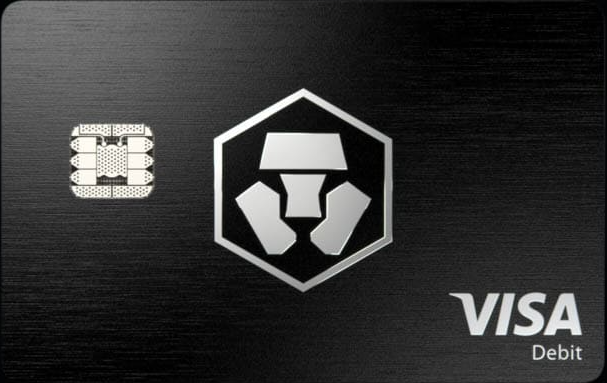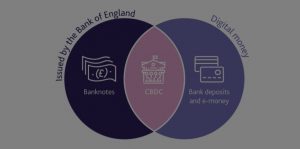
Crypto.com Visa

In July, Visa, which works with Circle, Blockbuster, and Coinbase, told CNBC that consumers spent over $1 billion with their cryptocurrencies on goods and services in the first six months of 2021. This summer, Mastercard released a credit card for the Gemini cryptocurrency exchange, co-founded by billionaires Cameron Winklevoss and Tyler Winklevoss. With its Visa insignia, the Gemini card acts like a traditional credit card with the modern advantages of cryptocurrency.
Its crypto-visa card can be used in more than 30 countries in the world, including the United States, Canada, and nations in Europe and the Asia-Pacific region. The crypto card has partnerships with major credit card manufacturers such as Visa and Mastercard, which means you can use your crypto cards for any service that is accepted. Card users can convert cryptocurrencies into one of six Fiat currencies (US Dollar, Canadian Dollar, British Pound, Euro, Hong Kong Dollar, and Singapore Dollar), by making credit and debit transactions with the cards, including ATM withdrawals.
A crypto-rewards credit card uses digital currency, also known as cryptocurrency, to withdraw cash or buy in person or online from retailers. A crypto-credit card works in a similar way to a conventional credit card, providing funds to repay rewards using digital currencies such as Bitcoin.
In cryptocurrencies, you can enjoy flexible spending and enhanced rewards backed by popular card issuers such as Visa and Mastercard. Potential customers should be aware that these cards are not the best option for earning rewards through spending. Consumers seeking to maximize their rewards should look for more traditional reward credit cards, which include the ability to offer rewards in the form of cryptocurrencies.
CRO rewards are earned for legitimate purchases and can earn a percentage, depending on the level of card you have. If you have a Ruby Steel card and receive 2% CRO rewards when you make a $1,000 purchase, you will receive 20% of the value of rewards based on the purchase price and issue date. Rewards vary depending on which card you choose, but most cards offer 3% to 5% of the CRO refund as well as other rewards.
The highest card, Obsidian, for example, claims to offer 8% CRO on most purchases. However, the amount you have to put down makes it irrelevant even to the most loyal crypto enthusiasts.
The following chart explains the card type you qualify for, its wagering requirements, and the rewards you can earn. The lower tier cards have the lowest rewards and wagering requirements, while the top tier cards offer more rewards in exchange for higher wagering requirements.
Prices and fees on these cards vary by membership level and include the usual costs associated with pre-paid debit cards, such as foreign transaction fees, interchange fees, top-up fees, and more. The Obsidian card line features impressive returns, luxurious performance profiles, and top-notch annual credit card fees of hundreds of dollars. These are interesting prepaid debit crypto cards that can earn huge rewards if you meet high standards.
The amount of the card depends on how much you bet, and the more you bet, the more benefits and perks you can unlock. Regarding the rewards that can be earned, it is important to note that the Bitcoin Rewards Card and SoFi Card (BlockFI) BlockFI do not require any wagers and they make it easy to earn rewards for your spending, regardless of whether you own cryptocurrency or not. Each card level also offers 2% interest on non-CRO currency features, which is good if you want to diversify your portfolio.
The only fee we could find that was comparable to other cards is the fee for ATM withdrawals. Therefore, there is a $2.00 fee for Midnight Blue Card withdrawals, but the higher the level, the higher the fee is free of charge.
Each time you use the card a percentage of the amount you pay for the card is transferred to you in the form of CRO tokens. The percentage is between 1% and 8%, depending on how many CROs you have wagered. Cardholders who place CRO on the card (based on the new insert and the Fiat) will receive the exact amount of CROs they have placed on the new Fiat-based insert.
Royal, Indigo, Jade, and Green Card offer 3% crypto for eligible purchases. Users can also choose Obsidian and Black cards, but they need 50,000 MCO coins, which are traded at today’s exchange rate of $4.50. Most families do not rely on crypto, so there are no credit card fees, but we have based our assumptions on the ruby and steel cards.
Just make sure you can handle the type of crypto you earn and how crypto works before you give up and choose a crypto card over a conventional reward credit card. There is also Obsidian Crypto’s top tier, most premium card, but it comes with a huge stakes need of 400,000.
A number of members of the crypto community, as well as people who pay with cryptocurrencies, have tried a myriad of prepaid cards to credit digital currencies such as Bitcoin. MasterCard network provider Visa said today in a press release that it has tapped a number of partners to launch a pilot program to handle transactions with digital stable coins, such as the Ethereum cryptocurrency, as part of companies’ evolving efforts to bridge the traditional digital currency gap. Since fiat varies from card to card, it is important to check that your crypto-reward credit card supports currency conversion for your trip.

